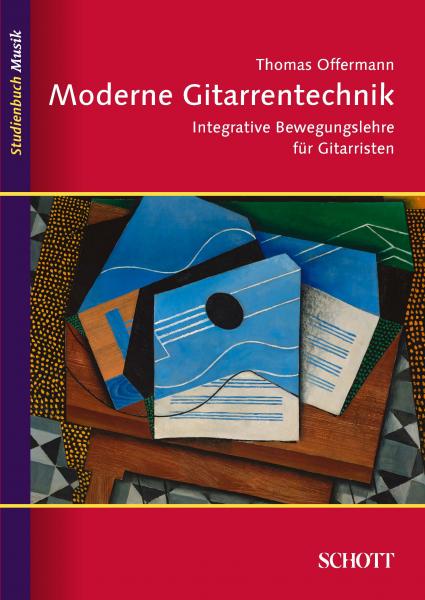
2015 “Moderne Gitarrentechnik – Integrative Bewegungslehre für Gitarristen”
Studienbuch Musik, Schott/Mainz
Bestellnummer ED 22285, ISBN 978-3-7957-0886-3

2019 “Modern Guitar Technique – Integrative Movement Theory for Guitarists”
LB 36; ISBN 978-88-8109-516-2
2009 Dissertation „Die Integrative Gitarrentechnik“
2010 Arrangement
Johann Sebastian Bach – TOCCATA BWV 914
Arranged for guitar duo by Thomas Offermann
Recorded by Duo Sonare on SST 0204
Chanterelle, Heidelberg, Germany
„Modern Guitar Technique –
Integrative Movement Theory for Guitarists“
by Prof Dr. Thomas Offermann
This publication is an objective contribution to Guitar Technique with a framework derived from a knowledge-base drawing on anatomic and physical factors.
Instrumentalists make mistakes only when playing their instrument without conscious and mindful awareness. Any viable instrumental technique can only be based on natural movements executed without any cognitive feedback but with conscious proprioception. Stating that pre-tension is a precondition for any movement leads to the conclusion that the demand for “relaxed instrumental playing” as such is paradoxical.
Playing without pain and health risks directly influences the possibilities of artistic expression. Guitar technique is traditionally accompanied by numerous restrictive instructions on what not to do. Based on a deeper understanding, this school fundamentally opposes this idea, believing that we do not make mistakes if we handle the instrument consciously and mindfully. Experimenting with movements, even large ones, is permitted and is most likely to lead to the desired goal. The present work is intended to serve as a means of channelling possible undesirable developments.
Any sound instrumental technique can only draw on natural movements that are performed without cognitive feedback: these cannot fundamentally be wrong and are linked to complex movement programs through conscious awareness of one’s own perception.
Only restrictive instructions that run counter to physiology contain the potential for conflict that can lead to the problems mentioned above.
The observation that no movement can be performed without pre-tension initially leads to the reverse conclusion that the demand for ‘relaxed instrumental playing’ is a false implication. Only the acceptance of pre-tensioning and pre-adjusting forces enables instrumental playing free of unnecessary tension with spatial and temporal precision, which are essential for instrumental playing at the highest level.